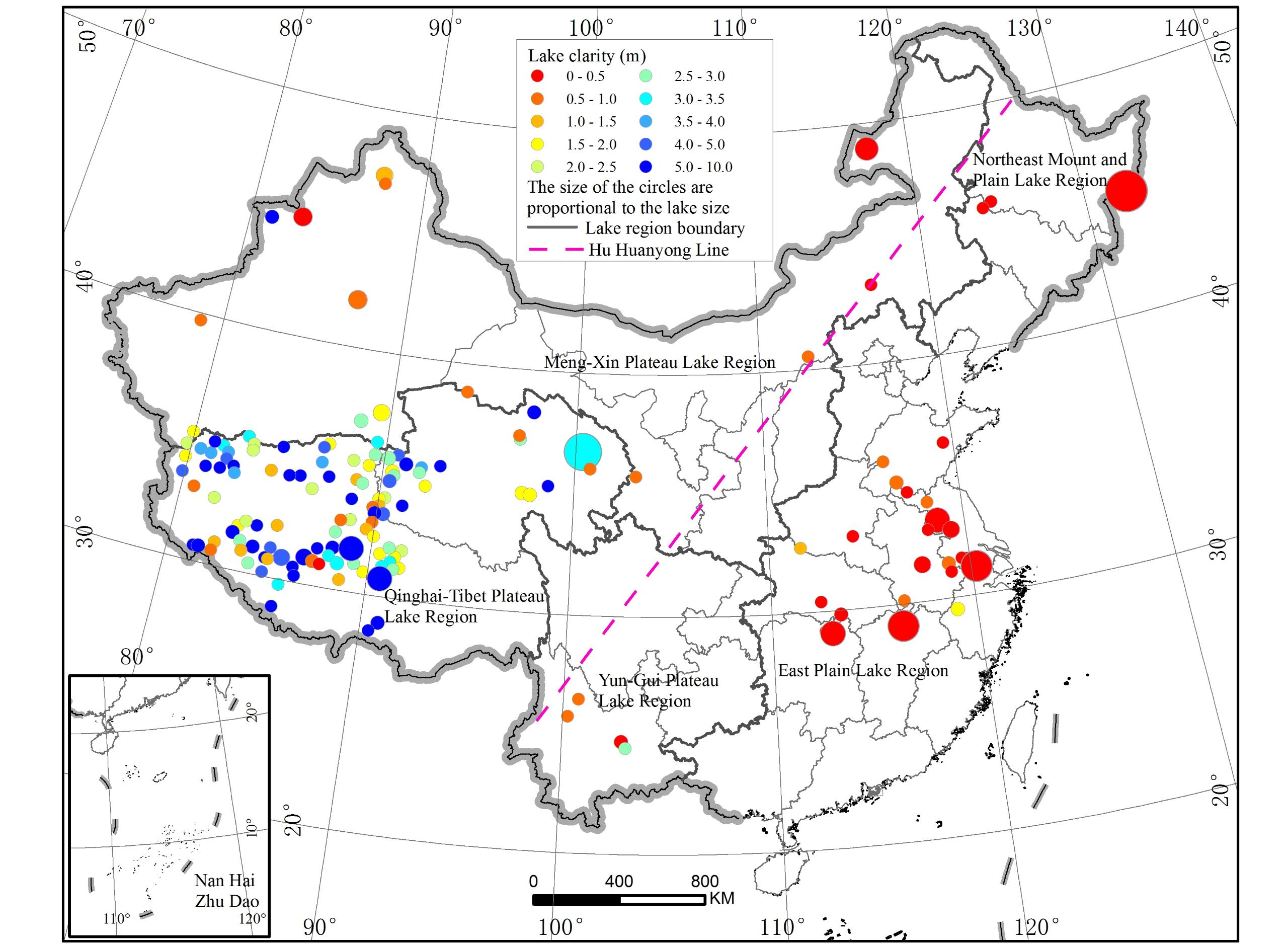Remote Sensing Study Reveals Increasing Water Clarity of China's Lakes
The water clarity of lakes across China shows a significant spatial pattern of "higher in the West while lower in the East", and an overall ever-increasing water clarity over the past two decades, according to a research based on remote sensing algorithm on MODIS measurements for 153 large lakes and reservoirs nationwide from 2000 to 2017.
The research was led by the scientists from the Aerospace Information Research Institute (AIR) under the Chinese Academy of Sciences (CAS). They developed a robust Secchi disk depth (ZSD) algorithm for lakes across China based on two water color parameters derived from MODIS measurements. A comprehensive assessment of water clarity in 153 large lakes and reservoirs across China was made by using ZSD MODIS model, and the simulated results matched up with in-situ measurements. The research paper titled "Changes of water clarity in large lakes and reservoirs across China observed from long-term MODIS" was published in the journal of Remote Sensing of Environment.
According to the study, significant increase of water clarity in lakes of Western China is found to correlate with the increase of air temperature and lake surface area, possibly as a response of lakes in Western China to climate change. In the lake systems of Eastern China, which are predominately used as a drinking water source, the increase of water clarity is found to be strongly connected with changes in local GDP, vegetation index and lake surface area, suggesting a combined effect of implemented management practices and climatic variability.
Lakes and reservoirs are core to water supply, crop production, recreation and human health. Water clarity is a crucial indicator of water quality used globally by water regulators in their monitoring and management programs.
The results of this study is expected to provide important information for water quality conservation and management in China, and also highlight the value of satellite remote sensing in monitoring long-term changes of water quality of lakes especially at national, regional or even global scales.

The climatological mean summer ZSD from 2000 to 2017 for large lakes in China.



News & Events